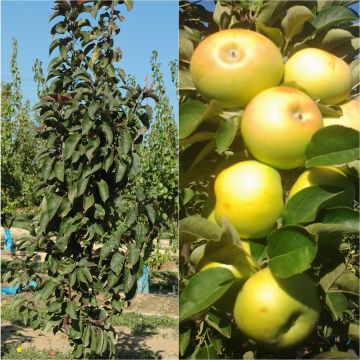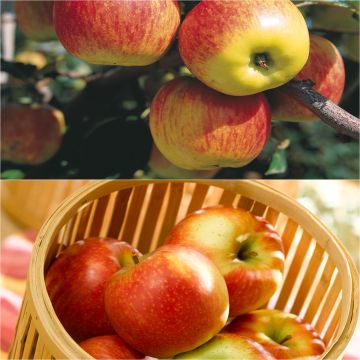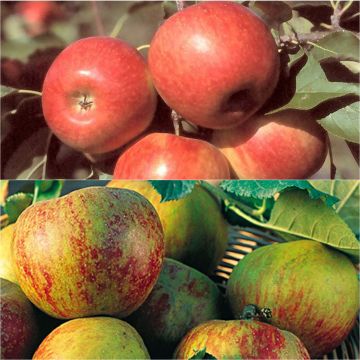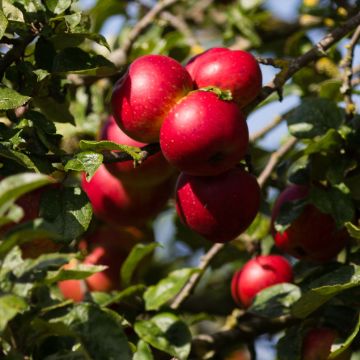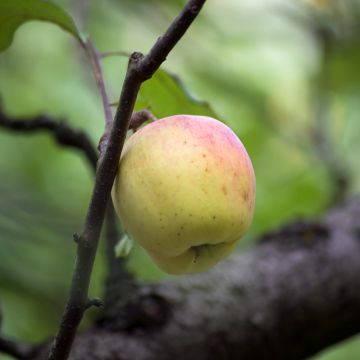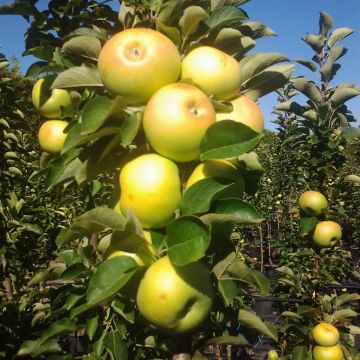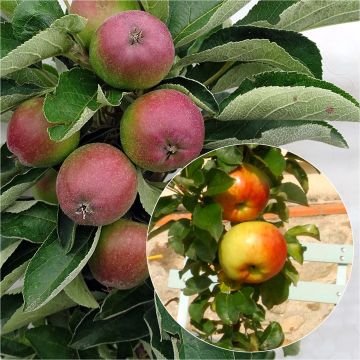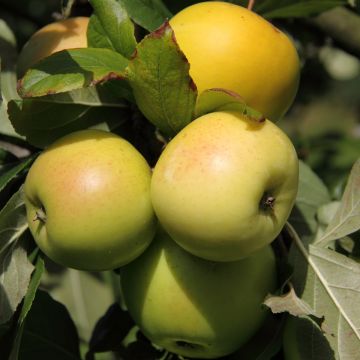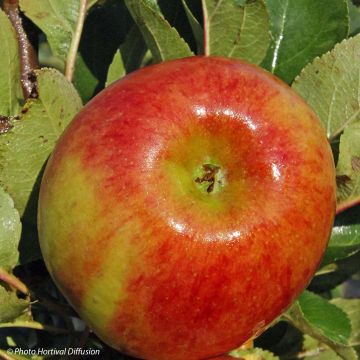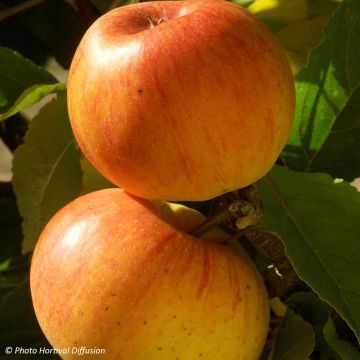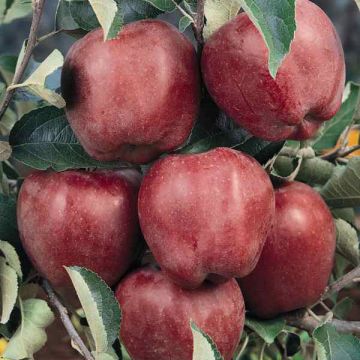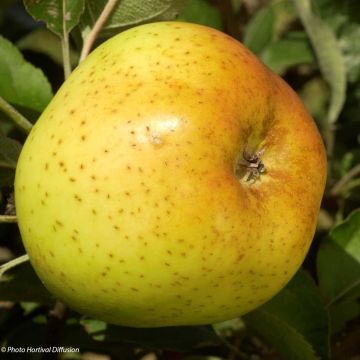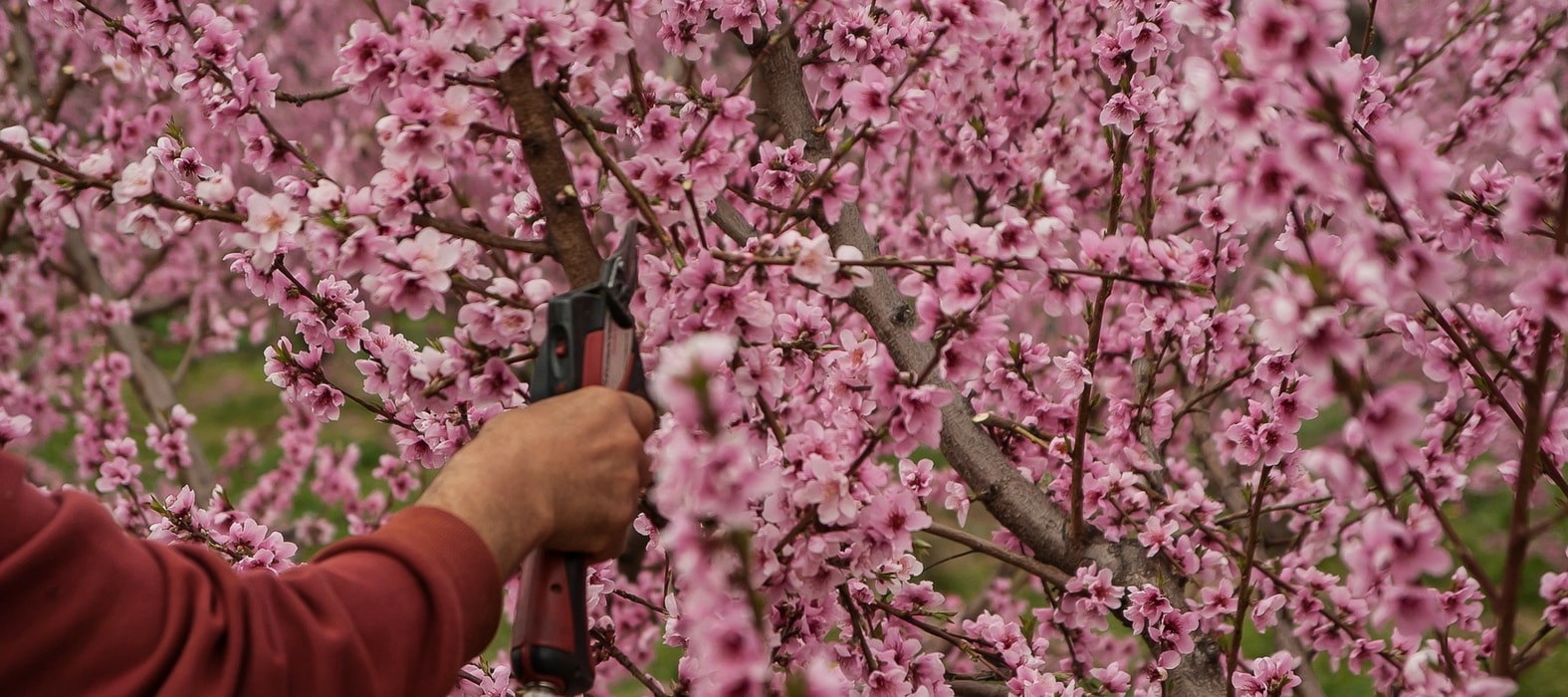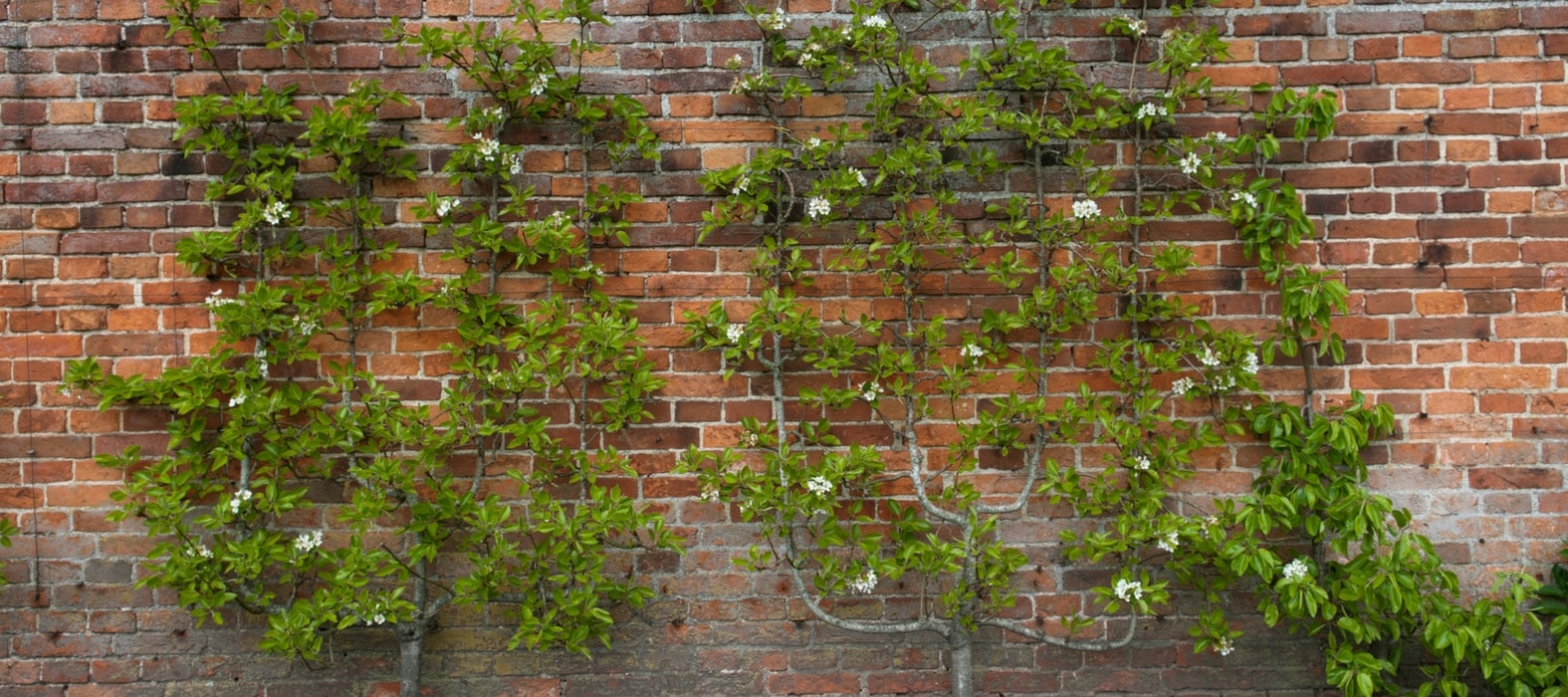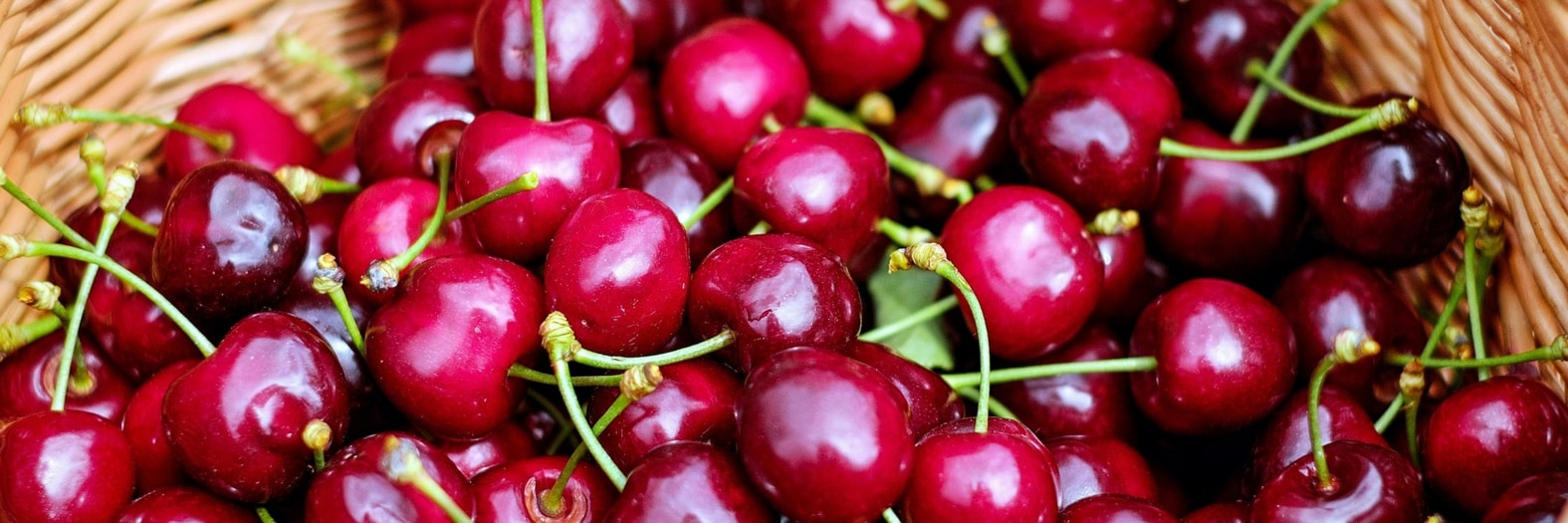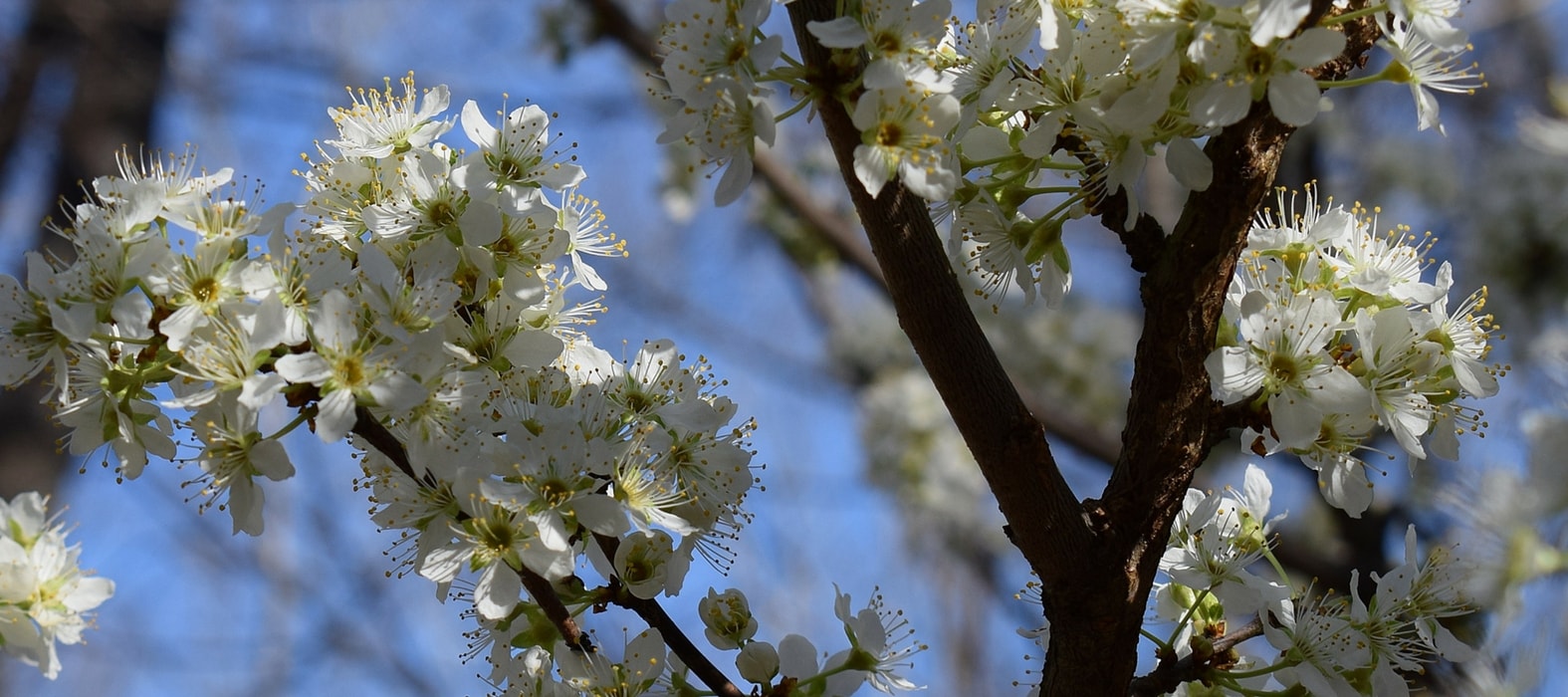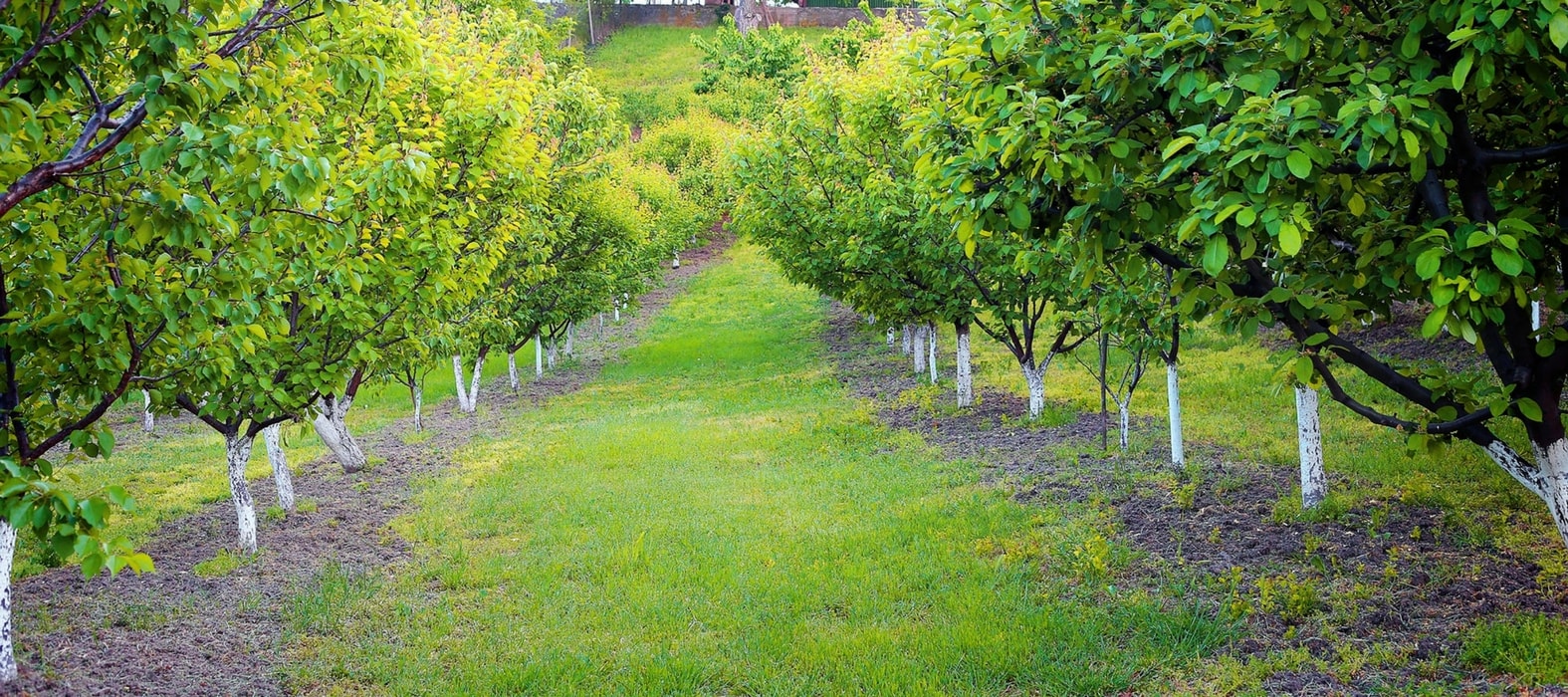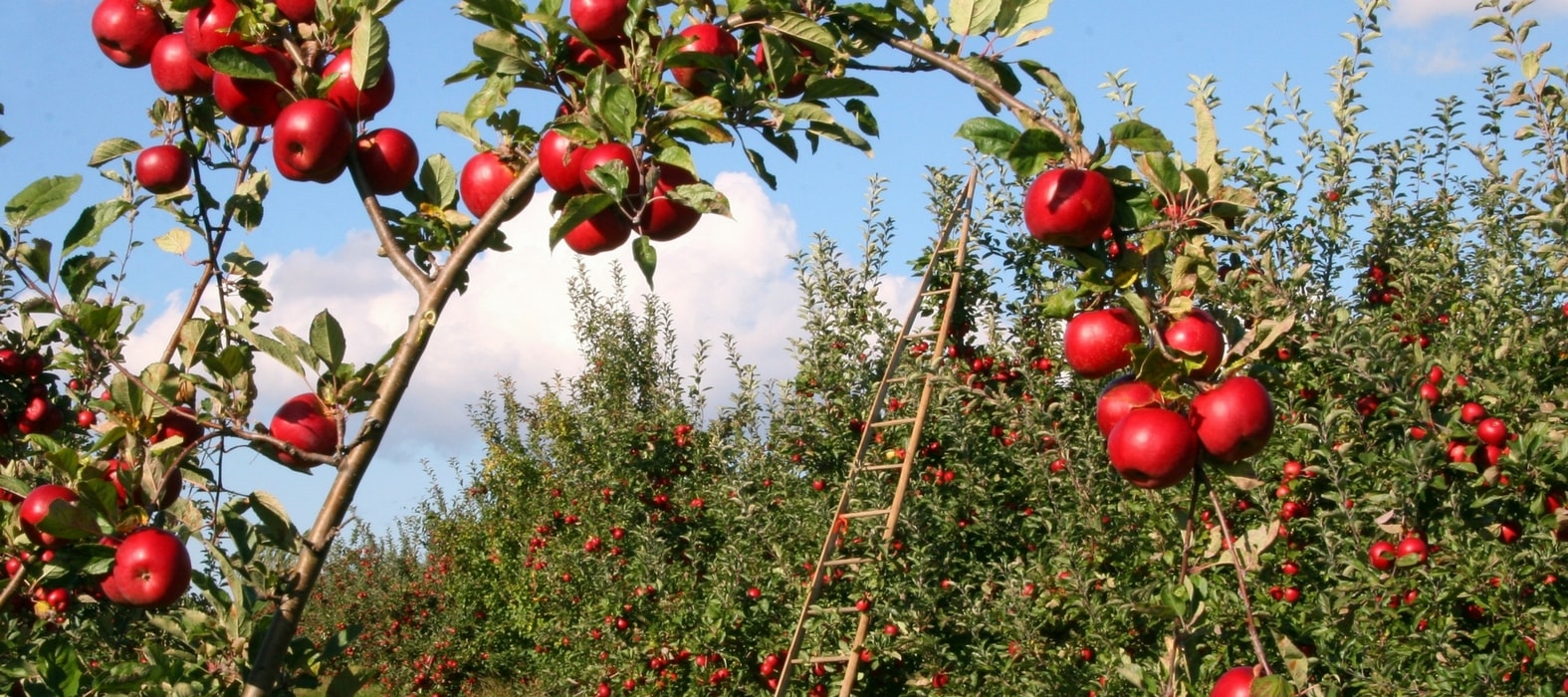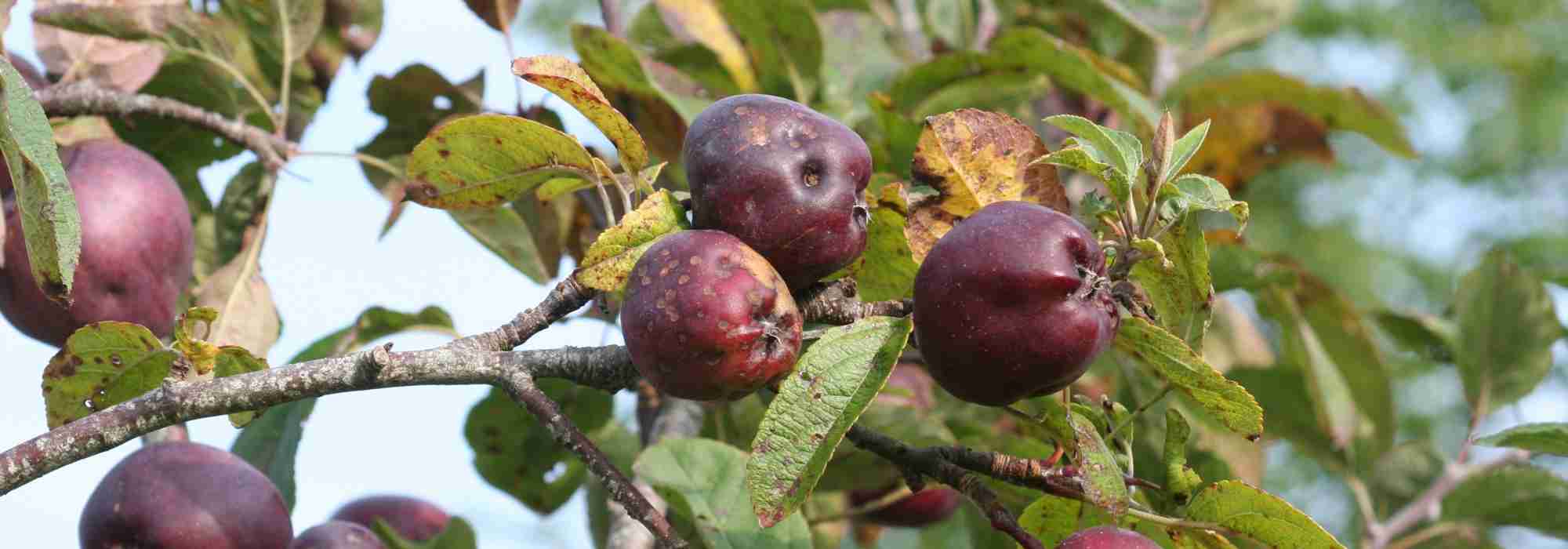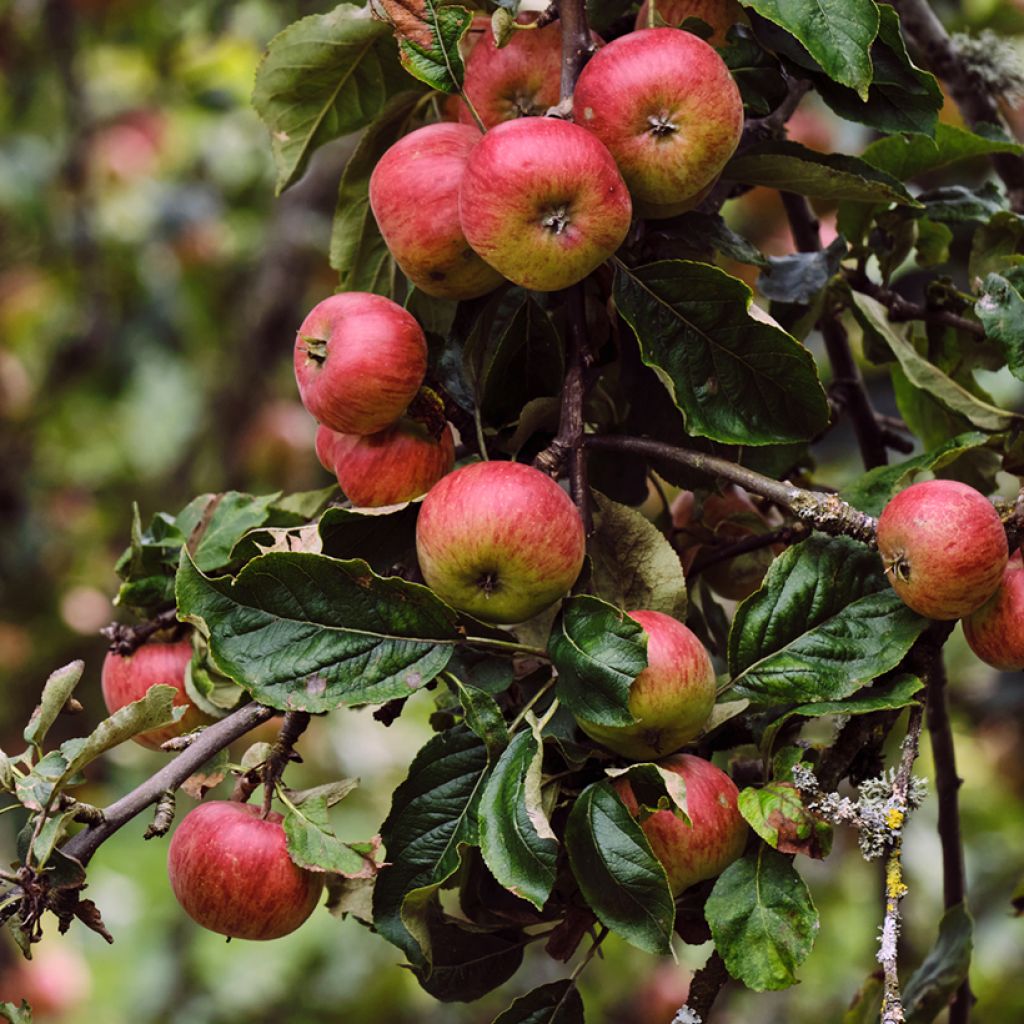

Malus domestica Rarytas Śląski - Pommier domestique, Pommier commun
Malus domestica Rarytas Śląski - Pommier domestique, Pommier commun
Malus domestica Rarytas Śląski
Pommier domestique, Pommier commun
Special offer!
Receive a €20 voucher for any order over €90 (excluding delivery costs, credit notes, and plastic-free options)!
1- Add your favorite plants to your cart.
2- Once you have reached €90, confirm your order (you can even choose the delivery date!).
3- As soon as your order is shipped, you will receive an email containing your voucher code, valid for 3 months (90 days).
Your voucher is unique and can only be used once, for any order with a minimum value of €20, excluding delivery costs.
Can be combined with other current offers, non-divisible and non-refundable.
Why not try an alternative variety in stock?
View all →This plant carries a 6 months recovery warranty
More information
We guarantee the quality of our plants for a full growing cycle, and will replace at our expense any plant that fails to recover under normal climatic and planting conditions.
Description
The 'Rarytas Śląski' Apple Tree is a Polish-origin variety closely related to the Reinette group. The apples which ripen in September are quite large, with a yellow-greenish hue marked by a red blush. Their flesh is firm and juicy, both sweet and slightly tangy, with a spicy note. The apples can be eaten raw and are perfect for desserts and preserves. This hardy tree is generally resistant to diseases and easy to grow in a medium-sized garden. It should be planted alongside a pollinator variety to ensure a good harvest.
The Malus domestica, also known as Malus communis or Malus pumila, is commonly called the Common or Domestic Apple Tree. It belongs to the large Rosaceae family. Present in Europe since antiquity, this fruit tree originates from the forests of Central Asia and now encompasses around 20,000 varieties.
The Apple Tree 'Rarytas Śląski' is a spontaneous variety discovered in Cieszyn Silesia, a historic region in southern Poland bordering the Czech Republic. It is likely a natural mutation of the Blenheim Orange or a hybridisation with another variety. 'Rarytas Śląski' is a vigorous variety, producing a tree with an open, loose, spherical crown and a regular, almost geometric shape. Its spring flowering, featuring small pinkish-white flowers, is melliferous and relatively ornamental. They require pollination by another variety, such as the 'Reine des Reinettes', to bear fruit.
The 'Rarytas Śląski' apple tree ripens later than many other varieties, so patience is required for the first harvest. Once established, yields are high but may fluctuate from year to year. Thinning excess fruit helps reduce biennial bearing while improving the already substantial size of the apples, which are evenly spherical or slightly asymmetrical and flattened. Their greenish-yellow to golden-yellow skin is marked by a variable red blush. The thick epidermis bears numerous lenticels. The flesh is juicy, lightly aromatic, and pleasantly firm, with a sweet, slightly spicy flavour reminiscent of Reinettes. The fruit ripens around mid to late September, depending on the region, and are best enjoyed raw, though they are often used in preserves or desserts.
Easy to grow, the 'Rarytas Śląski' Apple Tree is notably resistant to diseases like canker and scab, showing only mild susceptibility to apple scab. Moderately hardy when young, the tree toughens with age, becoming fully hardy. Create a small orchard by planting it alongside a Pear Tree from our wide selection to extend your harvest. A late variety like 'Conference' will provide fruit throughout the autumn. In milder regions, a 'Sharon' Persimmon will add delicious, decorative late-season fruit. For early harvests, consider small fruit bushes like Raspberries or Currants, or among trees, Cherry Trees, which offer varied flavours early in the season.
Plant habit
Fruit
Flowering
Foliage
Botanical data
Malus
domestica
Rarytas Śląski
Rosaceae
Pommier domestique, Pommier commun
Cultivar or hybrid
Other Apple trees
View all →Planting and care
Choose a sunny spot for your Rarytas Śląski apple tree; the soil can be slightly chalky or acidic but not excessively so. Dig a wide planting hole at least three times the volume of the root ball. Simultaneously add organic matter (compost, potting soil, etc.) and a base fertiliser like crushed horn. Do not bury the graft junction. Stake if necessary. For apple trees planted in isolation and exposed to strong winds, it may be beneficial to stake them using a guy-wire system: plant three stakes in a triangle 50 cm around the trunk and join them with pieces of wood. Protect the bark with a piece of rubber, for example, and attach the stakes to the trunk with metal wires. Water generously, even in winter and even if it rains. Fruit trees are ideally planted between October and March, avoiding frost periods. Container-grown young plants can be planted all year round, except during extreme heat or frost.
In winter, you can add a small shovel of wood ash rich in potash at the base of the tree and lightly incorporated into the surface of the soil, to improve fruiting. The apple tree can be susceptible to various diseases and pests. To minimise risks, space trees sufficiently, plant mixed-species hedges, and affix nest boxes or insect shelters to attract beneficial wildlife. In short: prioritise diversity. The main diseases affecting apple trees are scab (brown spots on the leaves), brown rot (wilting of flowers and fruit rot on the tree), and powdery mildew (white felting on the leaves). For these three cases, preventive action is preferable by spraying a horsetail decoction; as a last resort and during severe attacks, you can apply a Bordeaux mixture treatment. This variety is resistant to scab and canker but slightly susceptible to scab.
As for pests, the codling moth (or fruit worm) is a small caterpillar, resulting from a butterfly's eggs, which burrows into the fruit. To remedy this, it is best to act preventively by encouraging the presence of tits and bats through nest boxes. In case of aphid infestations, spray a solution based on tar soap.
During harvest in September-October, for optimal storage, place the apples with their peduncle facing downwards in crates or trays. Choose a location that is preferably completely dark, dry, and cool but frost-free.
Planting period
Intended location
Care
Planting & care advice
This item has not been reviewed yet - be the first to leave a review about it.
Haven't found what you were looking for?
Hardiness is the lowest winter temperature a plant can endure without suffering serious damage or even dying. However, hardiness is affected by location (a sheltered area, such as a patio), protection (winter cover) and soil type (hardiness is improved by well-drained soil).

Photo Sharing Terms & Conditions
In order to encourage gardeners to interact and share their experiences, Promesse de fleurs offers various media enabling content to be uploaded onto its Site - in particular via the ‘Photo sharing’ module.
The User agrees to refrain from:
- Posting any content that is illegal, prejudicial, insulting, racist, inciteful to hatred, revisionist, contrary to public decency, that infringes on privacy or on the privacy rights of third parties, in particular the publicity rights of persons and goods, intellectual property rights, or the right to privacy.
- Submitting content on behalf of a third party;
- Impersonate the identity of a third party and/or publish any personal information about a third party;
In general, the User undertakes to refrain from any unethical behaviour.
All Content (in particular text, comments, files, images, photos, videos, creative works, etc.), which may be subject to property or intellectual property rights, image or other private rights, shall remain the property of the User, subject to the limited rights granted by the terms of the licence granted by Promesse de fleurs as stated below. Users are at liberty to publish or not to publish such Content on the Site, notably via the ‘Photo Sharing’ facility, and accept that this Content shall be made public and freely accessible, notably on the Internet.
Users further acknowledge, undertake to have ,and guarantee that they hold all necessary rights and permissions to publish such material on the Site, in particular with regard to the legislation in force pertaining to any privacy, property, intellectual property, image, or contractual rights, or rights of any other nature. By publishing such Content on the Site, Users acknowledge accepting full liability as publishers of the Content within the meaning of the law, and grant Promesse de fleurs, free of charge, an inclusive, worldwide licence for the said Content for the entire duration of its publication, including all reproduction, representation, up/downloading, displaying, performing, transmission, and storage rights.
Users also grant permission for their name to be linked to the Content and accept that this link may not always be made available.
By engaging in posting material, Users consent to their Content becoming automatically accessible on the Internet, in particular on other sites and/or blogs and/or web pages of the Promesse de fleurs site, including in particular social pages and the Promesse de fleurs catalogue.
Users may secure the removal of entrusted content free of charge by issuing a simple request via our contact form.
The flowering period indicated on our website applies to countries and regions located in USDA zone 8 (France, the United Kingdom, Ireland, the Netherlands, etc.)
It will vary according to where you live:
- In zones 9 to 10 (Italy, Spain, Greece, etc.), flowering will occur about 2 to 4 weeks earlier.
- In zones 6 to 7 (Germany, Poland, Slovenia, and lower mountainous regions), flowering will be delayed by 2 to 3 weeks.
- In zone 5 (Central Europe, Scandinavia), blooming will be delayed by 3 to 5 weeks.
In temperate climates, pruning of spring-flowering shrubs (forsythia, spireas, etc.) should be done just after flowering.
Pruning of summer-flowering shrubs (Indian Lilac, Perovskia, etc.) can be done in winter or spring.
In cold regions as well as with frost-sensitive plants, avoid pruning too early when severe frosts may still occur.
The planting period indicated on our website applies to countries and regions located in USDA zone 8 (France, United Kingdom, Ireland, Netherlands).
It will vary according to where you live:
- In Mediterranean zones (Marseille, Madrid, Milan, etc.), autumn and winter are the best planting periods.
- In continental zones (Strasbourg, Munich, Vienna, etc.), delay planting by 2 to 3 weeks in spring and bring it forward by 2 to 4 weeks in autumn.
- In mountainous regions (the Alps, Pyrenees, Carpathians, etc.), it is best to plant in late spring (May-June) or late summer (August-September).
The harvesting period indicated on our website applies to countries and regions in USDA zone 8 (France, England, Ireland, the Netherlands).
In colder areas (Scandinavia, Poland, Austria...) fruit and vegetable harvests are likely to be delayed by 3-4 weeks.
In warmer areas (Italy, Spain, Greece, etc.), harvesting will probably take place earlier, depending on weather conditions.
The sowing periods indicated on our website apply to countries and regions within USDA Zone 8 (France, UK, Ireland, Netherlands).
In colder areas (Scandinavia, Poland, Austria...), delay any outdoor sowing by 3-4 weeks, or sow under glass.
In warmer climes (Italy, Spain, Greece, etc.), bring outdoor sowing forward by a few weeks.


































